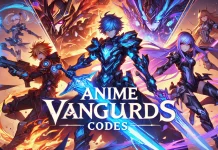The game industry is evolving because of Web3. It must happen. The future of gaming has changed forever, regardless of whether it manages to replace technology as we know it or fails and collapses. Regardless of your stance, it is important to understand how the environment changes.
What is the source of this abrupt expansion?
The rise of technology and exponential growth are largely to blame for this. Online interaction, communication, information gathering, production, and consumption, value transfer, and community building are all being revolutionized by technology.
How blockchain technology will impact video games in the future is still an open topic. Let us assist you. We will provide a straightforward guide and explain how the gaming category came to be, where we are now, and why the business is flourishing in this post.
The New Evolution of Gaming
The total number of gamers in the globe is numerous, and they spend $200 billion yearly on consoles and in-app purchases like NFTs. This category is larger than music and movies, demonstrating the growing amount of time we spend in virtual environments. That’s absurd.
It is understandable why gaming is one of the world’s most well-liked and rapidly expanding businesses today. Anyone who wasn’t living under a rock would have seen this. Games now appeal to individuals from all walks of life because they are more accessible and engaging than ever, thanks to technological advancements.
Web3 game development companies can completely change the gaming industry since they are supported by blockchain and cryptocurrencies.
The video game business has undergone multiple evolutions since the creation of the first video game—which, incidentally, was created by a physicist—each of which improved upon the preceding generation of gaming.
Now that we are in the Web3 age, gaming will shift again. In contrast to previous evolutions, where games were altered by:
- What role they performed (e.g., arcade vs. computer vs. console),
- Graphics (quality, 2D, and 3D), or
- Experience (storylines)
The games are altering in terms of what players can learn from them. Over time, individuals and games have largely maintained the same connection. Players spend their time and money, and they get an experience in exchange.
Players commit their time and money to Web3 games, but there is a significant difference from “normal” games. They get rewards in the form of both experience and digital assets, which they may be able to sell for more money than they initially put into the game.
The Expansion of Web3 Games
Blockchain gaming has increased by around 2000% since last year. The numbers, as a whole, are extremely outstanding. In the first three months of 2022, more than 1.1 million different active wallets were linked to blockchain games daily, making up more than half (52%) of all blockchain activity.
It may be enlightening to know that in the first quarter of 2022, games and metaverse projects raised 2.5 billion US dollars, which may aid those who are displeased with the immaturity or lack of maturity of Web3 games.
Over half of the total funds collected in this category in 2021 were raised using this (4 billion US dollars). As a result, plenty of cash is available for all the different gaming projects worldwide to produce and finally deliver a high-caliber product for the general audience.
Key Features of Web3 Gaming
Web3 gaming is essentially a decentralized kind of gaming where players and the platform share ownership and rights to the game’s operations. It is supported by and thrives on a variety of characteristics, such as:
Play To Earn
Through different features of play-to-earn (P2E) based games, which enable players to earn virtual assets ranging from in-game cash to NFTs and cryptocurrencies, players may obtain non-fungible tokens and cryptocurrencies. These tokens and cryptocurrencies may be bought and sold on the open market. In-game activities that players complete may also reward them with fiat money.
Rewards may be obtained in various ways, including betting, collecting in-game cash that can be converted into real money, minting NFTs and virtual assets, and receiving scholarships.
Integration of Old Games
The upgrading and integration of more conventional game models into the Metaverse and Blockchain platforms, which gives these games a decentralized method of operation, is another exciting facet of Web3 gaming. Each player has a certain game that draws them in more than others.
As a result, by incorporating well-known and iconic games into the Metaverse, Web3 gives gamers a chance to enhance their experience. Players may make avatars here and exchange game items and collectibles with one another.
Sense of Ownership
Web3’s self-sovereignty feature allows users and gamers authority over virtual commodities, unique gaming experiences, activities, and intellectual property. Users can move their earned game assets from one platform to another while maintaining ownership.
Player-Centricity
The Web3 gaming environment is tailored to each player’s tastes using elements like old-game integration, play-to-earn, and self-sovereignty.
Players may make money from their in-game products or play their favorite games in the metaverse by integrating them into the platform, two benefits of Web3 gaming. When using their in-game stuff to make money, gamers may profit from both parts of player-centric gaming.
Transparency
Web3 games utilize blockchain technology and are almost unhackable because they rely on voter consensus to alter the game’s mechanics. The blockchain keeps a record of every action, which gives Web3 games a high degree of openness and transparency.
Web3 games: A Glimpse Into the Future
Although there are many acceptance and implementation issues with Web3, the changeover has already started. These and other factors should motivate Web2 players to investigate Web3 games further.
Web3 development companies have fundamentally changed the competitive gaming market and given rise to a virtual gaming democracy by integrating blockchain and metaverse technologies into the game business.
We hope we have given you a basic understanding of this invention, which is only one of many integrating user content ownership into the developing internet.
It is now a matter of when not what. Trust us on this. The business sector is thriving. The revolution in Web3 gaming has already started. The sooner you act and seize this opportunity, the better.








